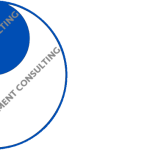Archives
now browsing by author
5 Reasons Why Businesses are Hiring Management and Technology Consulting Hybrids

Traditional business consultants are largely falling out of favor for management and technology consulting hybrids. While there are many business consultants who are truly worth their rates, a pervasive feeling in the business world is that a business consultant is someone who “takes your watch and tell you what time it is.”
There are five main reasons why businesses are opting to hire management consultants who are also business technology experts:
Reason #1: Business Don’t Know What They Don’t Know
This is a common problem as workplaces become more invested in powerful but highly complex technology. Often times, these businesses will hit a technology roadblock and have no idea how to overcome it. And while IT experts can straighten out the tech problem, the problem often lies at the crossroads of business and technology.
Reason #2: IT-Only Firms Are Not Understanding Business Objectives
Many times, clients seek help from the big IT firms or hire techno “geeks” to directly interact with business processes. While the valuable work of these professionals is not to be understated, their interest and focus lies sometimes exclusively with the tech and not the living, process-side of the equation. Frequently, this results in technology that runs fine but goes underutilized. Itcan also lead to an expensive misalignment of technology and business objectives.
Reason #3: Management and Technology Consultants Creatively Offer Solutions
IT firms are great if you already have a good idea of what you want, but unfortunately sometimes the solutions aren’t always so clear. A common mistake businesses make is feeding info to an IT person, only to have them completely misinterpret what was said. This can be a costly mistake.
Management and technology expert listen with both an ear for business goals and technology requirements. As such, they can help clients make informed decisions in regards to their sales, data management, security, and other goals.
Reason #4: Management and Technology Consultants Can Become Trusted Advisors
In many organizations, technology experts with business skills are moving up the corporate ladder and into the boardrooms since their input is necessary for modern problems. Those that have the propensity for business activities as well as the technology are valuable assets to the company. Someone who can wear both hats can make a great addition to a leadership team, especially in a part-time or contract capacity.
Reason #5: Top-tier Performance with Technology is a Necessity
Technology is slated to be the cause of most business growth for at least the short term future, according to a 2014 survey by McKinsey & Co. As such, technology-based leadership is growing in demand, and professionals who can do this are harder to find. Many businesses are getting their relationships in place now to strengthen their business/technology infrastructure for the future.
GeauxPoint Celebrates Six Years, Releases White Paper

GeauxPoint is pleased to release our newest white paper, “2020: Will You Get There? A Business Guide to Overcoming Disruption.” The paper helps business leaders prepare for change by listing four major sources of disruption and how to get past them.
The four categories of disruption according to the guide are 1) Disruptive innovation 2) Technology upheaval 3) Cultural Shits and 4) Changes in pricing determination.
The guide take a close-up examination of the banking, healthcare, non-profit, and business association industries. It also traces the histories of businesses that either succeeded or failed to navigate change. The paper uses these cases to demonstrate effective change-handling strategies.
The guide coincides with GeauxPoint’s entering into its sixth year. Over the last two years, we’ve more than doubled our book of business, adding multiple national and international clients.
Thought leadership is a core value of GeauxPoint, and as we grow, we intend to share as much of our knowledge as possible with our friends.
Click here to read the paper!
The #1 Biggest Mistake Small Business Make in Technology

We once had a client who hired one of the area’s largest IT firms for her small business. This was a huge mess-up, and one that we see all the time.
She had gotten the reference from a close acquaintance, who worked at a large corporate office. The IT firm did great work for the large office and mostly supported the organization’s existing infrastructure and in-house IT team.
When the large IT firm got to my client’s small business, however, the job description was much different. They essentially had to build a technology infrastructure and telephony system from the ground-up for a five-person office.
Thousands of dollars and dozens of wasted hours later, my client could not understand why her investment was the source of so many problems. She thought she was going with the “cadillac” option will all the assurances they came with it. As it turned out, the IT company had installed a system that was perfect for large corporate office, but lousy for a small business. Really lousy, actually, and the whole system had to be scrapped.
Seek a Technology Advisor, Not a Large Tech Company
Hiring a large tech company with just because they have a solid track record is the #1 biggest mistake small businesses make in technology.
Large tech companies go with what they know. Their business model relies on servicing large clients, and often times they treat small businesses like large corporations.
If you have a smaller office, it’s best to build a relationship with a trusted technology partner. One reason for this is that an advisor will take the time to understand your unique business position and goals. The consultant can act like a part of the team, and often times provides advice beyond what is billed for if the relationship is good.
Also, small-business technology advisors are accustomed to the problems that the organizations face. “When all you’ve got is a hammer, every problem looks like a nail,” is an adage that aptly describes the way a large IT firm might approach a small-business problem.
Additionally, a technology advisor is someone with whom you can build a relationship with over time. If the relationship is good, the advisor will be more inclined to help you without worrying about billing so much. He or she might be willing to go the extra mile in the case of major problems, and will be more likely to give sound advice rather than administer placating “bad medicine.”
The downside of hiring an advisor is that they aren’t always a cost-effective option for managing the day-to-day operations regarding IT work. However, most will work with you to find a feasible maintenance solution or will train you to do this yourself, saving you tons of money.
In any case, always seek a technology advisor that is a good fit for your business. Just because a building contractor built the Empire State Building doesn’t mean they should build your house.
Tactical vs. Strategic Technology Management: Which do you need?

A mistake too many businesses make is not balancing their technology initiatives with a proper mix of tactical and strategic team members.
If technology was football, the strategic technology people would be the players doing the blocking and tackling while the tactical ones would be the ones calling the plays from up above.
If a technology team is balanced too much towards the tactical side, then operations run smoothly for a while but problems set in after time. Troubleshooting isn’t a problem, and employees are happy for the most part because they always have someone there for to lend technical assistance. This can lead to a false sense of security.
The disadvantages to having to many field-level IT guys, however, is that no one is thinking about business objectives or long-term goals. As a result, problems inevitably start mounting over time, and opportunities are missed as well. The technology team may overlook the growing disparity between new and old systems. They won’t deeply delve into the root causes of problems or advocate for change. Also, they will not champion projects that take workers out of their technological comfort zone, but will lead to significant increases in productivity in time.
Conversely, the technology team that includes too many strategic thinkers will know which way to they want to go, but won’t have the means to get there. This team will generate high-level concepts, create quality content such as reports, closely monitor tech trends, analyze the competition, and develop innovative strategies. However, without the tactical people to support the strategic leader, there will be no way to achieve these high-level goals. And although most strategic technology professional know how to do tactical stuff, their work won’t always be cost-effective since they usually charge more.
Most organizations understand the tactical part of technology, but fail on the strategic part of the equation. Executives of these organizations may be reliant on their own ability to set the direction for technology, or may be under the impression that their IT team will alert them as to anything important. This is hazardous, however, since technology is complex and always moving.
In a rapidly changing business landscape, technological capacity is essential to remain competitive. The efficacy of the technology team depends on a proper balance of both strategic “coaches” and the tactical “players.”
To learn more about technology strategies that can help your business, contact us for a free consultation.
The 3 Essential Parts of an Innovative Grant Writing Team

Innovation sells — whether it’s business software, consumer products, or charitable ventures. You can ask almost any foundation representative in the country, and they’ll tell you that forward thinking projects with reasonable goals and well-defined objectives are going to be the favorites among the stacks of same-ol same-ol.
So how do you start an innovative grant writing initiatve? It’s not as simple splashing in some line-items for computers. Having access to a thought leader in technology is essential in the process. You can tap into a technology thought leader by recruiting a consultant, asking for in-kind assistance, or hiring a forward-thinking technology expert.
Ideally, the perfect grant writing strategy will include a 3-person team:
1) The thought leader.
This is the person who has been in the trenches in technology innovation. Either they’ve been in the venture-capital world or simply keep up with trends and hot tech that is new to market. They understand pie-in-the sky concepts but can boil these down to usable levels.
2) The technical-grant writer.
This is the person that can translate the thought-leaders vision into a grant with need statement, strategy, and outcomes. The writer doesn’t necessarily need to understand technology, but must have a good relationship through which he or she can communicate effectively with the thought leader. A good writer will strive to write a complete grant while minimizing the amount of involvement needed from the technical experts.
3) The forward-thinking executive.
Once the writer and thought leader have completed the grant, it needs executive buy-in. The leader must envision how the project will fit in to their organization and solicit top-down support within both the community and their own nonprofit.
Once you’ve got your team assemble, you might want to consider a starting project that is both of great value to your mission and also a continual revenue generator. These types of projects have modular components that can be scaled up in increments. When these projects hit their objectives with each expansion, they can become cash-cows for the organization and can propel the nonprofit to thought leadership status within their industry.
Crisis Intervention Technology Spotlight: Telemental Health and NAASP

Crisis intervention technology continues to leverage Web and mobile space, leading to improvements in service efficiency and reach. Increasingly, organizations such as the National Action Alliance for Suicide Prevention (NAASP) are reviewing tele-medical strategies for suicide prevention.
About NAASP
The National Action Alliance for Suicide Prevention (NAASP) has a lofty vision: a nation free from the tragic experience of suicide. The organization hopes to save 20,000 lives between 2010 when the nation was founded and 2015.
To complete actualize its vision, NAASP created Zero Suicide Advisory Group. Zero Suicide is NAASP’s strategy of expanding suicide prevention in healthcare systems. Its primary concern is patient safety.
The strategy comprises six components:
- Creating a culture of zero suicide by confronting the culture of pessimism and hopelessness in healthcare organizations regarding making any real progress in suicidal cases.
- Ensuring every person has a pathway to care by providing screening tools and promoting screening options.
- Developing a competent workforce by training healthcare providers to handle situations involve suicide.
- Identifying and assessing risk level during primary care.
- Using effective, evidence-based care by employing data-backed studies that indicate that suicidal ideation should be treated directly and not as a symptom to a problem.
- Continuing contact after care by providing critical follow-up interventions to ensure the ongoing safety of patients.
Virtual/Remote Suicide Prevention
One way that NAASP will carry out its suicide-prevention goals is technology-based care. This involves administering crisis intervention services remotely.
According to NAASP, virtual or remote care can keep give suicidal persons constant access to help throughout all hours of the day and night. This involves multiple crisis intervention strategies, including existing strategies of phone lines, emerging strategies including text and chat, and developing strategies including telecounseling, online video counseling, and self-assessment.
According to a 2013 report published by the American Telemedicine Association (ATA), telemental health is one of the most active telemedicine applications rendered in the United States. The service delivery strategy is efficient and allows clinicians to broaden their reach to patients. Telemental health can even be delivered over mobile devices – an extremely fast growing method of communication.
It may be that, in the future, telemental health and crisis intervention services will work more closely together. Where in the past, crisis intervention services could only be accessed from a phone, now a person can only speak, text, and chat with a crisis counselor via mobile phone, but also teleconference with a professional clinician as well. Further, all of this can take place in a short amount of time, and for less cost to the client than ever before.
New York Times Crisis Text Line Article Demonstrates Public’s Interest in the Service

The February 4, 2014 The New York Times Crisis Text Line article describes the text-based crisis counseling service and how it better serves youth in an increasingly non-verbal world.
The article, titled “In Texting Era, Crisis Hotlines Put Help at Youths’ Fingertips,” by Leslie Kaufman, vaguely describes an real chat taken by Crisis Text Line, a subsidiary of DoSomething.org. The situation is one in which a young female caller is distressed from gender identification issues, and tells the specialists that her family has disowned her because of her expressed desire to be a male.
The article breaks out the numerous benefits to texting, including: the ability for counselors to take multiple text sessions, seamless reopening of a text session after it has been interrupted, and the ability to text in public without privacy concerns. It also talks about how text is better at reaching youths, many of whom do not require lengthy rapport-building before disclosing suicidal or other severe tendencies. This is usually the case with phone crisis counseling, according to the article.
Ron White, chief program officer for Samaritans Inc., commented on this matter in the article, stating: “On the phone there is sometime building a rapport,” he said, “but young people on text tend to get right to the point.”
To demonstrate how text clients are more open with specialists, the article excerpts text that is presumably from a real text session:
“He won’t stop raping me. It is my dad. He told me not to tell anyone. Are U there?”
Nancy Lublin, the founder of the Crisis Text Line, was the main interview subject for the article. Although Lublin did grant The Times access to text transcripts, citing confidentiality concerns, she was able to show them text data and transcripts that were stripped of identifying information.
Interestingly, the article refers to crisis texting as a “nascent” technology. Now that This reflects the publics view of crisis text as an innovative and burgeoning new service that people come to expect in the digital age. Now that crisis intervention is reaching large new populations, the industry is seeing a re-introduction to the national community. As new crisis intervention technologies continue to mature, the industry may see more publicity going forward.
Aaron Blackledge was one of the pioneers of Crisis Chat, and helped to establish the service in Baton Rouge, Louisiana – the second city in the United States to host the service. Aaron went on to help help numerous cities throughout the nation, as well. Also, For questions about text or chat, or to learn more, contact Aaron today.
Crisis Intervention Technology Round-Up

Technology is changing the game in crisis intervention. Innovative organizations are continually finding new ways to reach larger audience.
Here’s how some prominent crisis intervention organizations are using crisis intervention technology to great effectiveness:
Emotion Technology Looks to the Next Generation
Emotion Technology CEO Christopher Gandin Le recently publish an article in the Huffington Post stating that the future of suicide prevention rests on the new ideas of young people and new technology.
“I’ve reached the limit to what I can imagine as one person,” said Le. “ It’s time for people who are far smarter than me and far less experienced in doing this work to innovate.”
Siri Helps Prevent Suicide
Telling your iPhone assistant that you are thinking about hurting yourself now leads to automated intervention on behalf of Siri.
The voice-activated software responds to several similar commands, such as “I want to jump off a bridge,” and refers the National Suicide Prevention hotline number to the user. Could a direct connection to a Crisis Chat channel be the next feature in store?

NSPL Steps Up its Content Creation
Many crisis interventions organizations are stepping up their content creation game to reach audiences where they are – the Web.
Lifeline’s stylish blog titled You Matter looks fantastic and is extremely readable. There are several dozen posts for audiences who are in crisis or may be worried about someone else in crisis. Self-care tips, positive message, and tutorials are common themes for the blog.
Veteran’s Crisis Hotline Goes Mainstream
The highly successful Veteran’s Crisis Line (hotline, online chat & text) has garnered considerable attention from major media companies.
HBO’s documentary Crisis Hotline: Veterans Press 1 spotlights the traumas endured by America’s veterans as seen through the eyes of the crisis counselors who take the calls and chats.
Additionally, NPR published an article in September 2013 about the veteran’s service which describes the stories soldiers share with the hotline. The article features four hotline employees who share their experiences with StoryCorps, — an American non-profit organization whose mission is to tell the stories of Americans from all backgrounds and belief.
Have an idea for a crisis intervention technology project? We’d love to hear about it! Contact us today.
13 Must-Have Resources for HIPAA Compliance for Crisis Centers

Worried about HIPAA compliance for crisis centers? As crisis centers and I&R service providers advance, data privacy typically becomes a larger concern.
As crisis centers advance in their mission and adopt new programs, many are wising up to data hazards. For instance, did you know that an organization that simply stores the data of a health organization is subject to PHI regulation? For more information on how crisis centers are insuring against privacy violations, see our earlier blog posts about trends in I&R.
For a complete data-security audit, you’ll need legal and expert assistance. However, there are some steps you can take on your own to mitigate risk. Use these 13 resources HIPAA Compliance for Crisis Centers to maintain data privacy for your valuable information:
Breach notification readiness
For many organizations, it’s not if you’ll have a breach, but when. Know what to do when a breach happens and mitigate the negative consequences as much as possible:
AMA Breach Notification publication: Comprehensive breach notification guide for physicians, most of which applies for crisis centers.
HHS Breach Portal: Comprehensive resource portal for everything regarding data breaches according to HHS.
Legislation/Government
These publications include complete legislation in regards to HIPAA. Lots of pages, but if you’re doing an in-depth analysis, you’ll need these.
45 CFR Parts 160 and 164. Government document describing HIPAA.
HIPAA Homesite. Everything you (or more likely your lawyer) needs to know about HIPAA.
News
Like most legislation, HIPAA changes over time. Keep track of changes on the Web and through social media.
HHS “What’s New” homesite. Likely, this will be the first place to publish news about HIPAA changes.
Social Media Feed (Twitter) @hippanews.
Technology
Aside from training, technology resources are powerful tools for improving data security.
Sonicwall Email security. Email scrubbers help to prevent PHI from getting accidentally sent to non-authorized persons. There are lots of products for this and shopping is recommended; however we have listed the Sonicwall version here.
HHS Technology resources. HHS-endorsed technology solutions portal.
Tools
Here are a few handy items for data compliance.
Automated compliance checker. Questionnaire estimates your risk-level based on some basic-level questions.
Product marketplace. Portal with an assortment of HIPAA-related electronic items, such as training programs.
Training
As stated, training is your first line of defense against breaches. Build your own training curriculum, or purchase a tried-and-true training package from one of the following portals:
HIPAA Training videos. HHS-recommended training resources.
Online training courses. An assortment of Web training curriculums that should be considered when developing a training program.
BONUS RESOURCE FOR RESEARCHERS
We promised you thirteen resources, but here’s a fourteenth essential resource, on the house. While this page doesn’t include much in the way of data privacy, it is nonetheless a helpful repository of statistics about drug addiction.
Profile of addiction by profession data resource. Interactive research tool about substance abuse.
Have any more questions about training? Contact us today!
Five Essential Volunteer Committee Development Strategies

Being head of a volunteer committee is your time to shine. However, you’ll only succeed if you can identify and properly execute the proper committee development strategies.
Use these strategies to develop your committee and set them up for success:
Connect to leadership. Volunteer committee members must feel like their work is being recognized and appreciated, and this may involve participation and the highest levels of an organization.
Try to connect your volunteer committee with an executive or some higher board, if one exists. This way, your professional volunteers are making connections, staying motivating, and getting a great overall feeling about the importance of their work.
Have a strategy for overcoming knowledge gaps. Advisory committees often strive to have a wide breadth of knowledge. While this is a great idea, it may lead to a shortfall of knowledge if the committee focuses deeply on something.
Consider instigating advisory positions for your committee. This could be guest members who participate but do not have the full commitment of members.
Plan for growth and recruitment. If you are leading a permanent committee, always be thinking about sustainability. This is something you probably can’t do alone.
Set clear expectations with committee members that they will be expected to refer possible members or advisors. This doesn’t mean they will have to jockey professional relationships, but they should nonetheless feel compelled to keep their eyes and ears open for possible recruits at all hours of the work day.
Develop strong relationships. Work can bring people closer together, and this enhances the quality and effectiveness of the work. Unfortunately, technology can take the human element out of this, and telecommunication (a popular method for volunteer boards) can hinder relationship development.
The tech committee leader should be mindful of the ways relationships are developing as the committee progresses. The committee leader should shake things up the event that people just aren’t warming up to each other, and assign partnerships are special tasks.
Build awareness of committee value. Do people appreciate what your volunteer committee does? This is critical for morale, especially for new committee.
Tap into your organization’s regular publications or media channels to plug the good work of your committee.
Aaron G. Blackledge has served on numerous local and national boards and committees. To schedule a free 30-minute consultation, contact Aaron today.
